Good teaching and hard study are the keys to tackling the knowledge required for students to thrive in the modern world, writes ELIZABETH STONE.
I have the clearest memory of watching my two-year-old son exploring the back garden. A very thin twig was poking out from the hedge. He picked up a rock about the size of my fist and slowly, with infinite care, he held the rock gently on the top of the trembling twig … and let go. The rock thumped to the ground, and my son learnt something about gravity and the relationship between the diameter and strength of a tree branch.
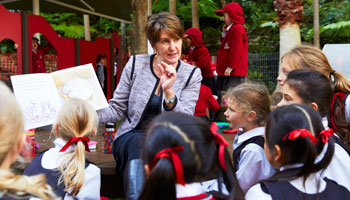
Students may learn to speak by doing but they require years of practice to become fluent readers.
The evolutionary psychologist David Geary described these basic ideas about material objects as ‘folk physics’. Children learn folk physics easily, simply by playing and exploring the world. What goes up must come down. An object doesn’t disappear just because you can’t see it, and so on. Similarly, all cultures have developed ‘folk biology’ (structured ways of observing living things and reasoning about them), and ‘folk psychology’ (how to understand and cooperate with other people).
Our brains are not inherently suited to this secondary knowledge, so the process of learning is much harder. In effect, we have to hijack cognitive architecture (roughly, brain circuitry) which was originally developed for ‘folk’ knowledge and retrained for new purposes such as reading.
It is easy to see why such knowledge would be essential to human evolution, and Geary argued that human brains have evolved so that such knowledge can be acquired rapidly and seamlessly from infancy. Those things that would have been essential to the survival of early hominids are to this day learnt by children with little effort. Toddlers don’t need English lessons – they acquire language by being spoken to. Children figure out how the material world works by mucking around in the garden. They learn about human behaviour and how to collaborate by simply playing together.
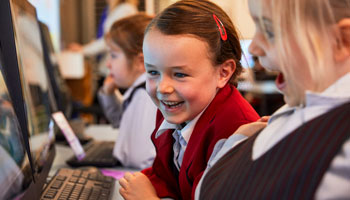
Most of what we learn in school is biologically secondary knowledge.
Knowledge that we learn naturally and without effort is, in Geary’s model, biologically primary. A great deal of knowledge, however, is essential in the modern world although it was not required throughout human evolution. Algebra is a basic tool of modern mathematics, technology and engineering but was unknown until a few hundred years ago. Even reading is only a few thousand years old, far too recent to have played any part in evolution. In fact, most of what we learn in school is biologically secondary knowledge – which makes sense because if it were biologically primary we’d pick it up without help anyway.
Our brains are not inherently suited to this secondary knowledge, so the process of learning is much harder. In effect, we have to hijack cognitive architecture (roughly, brain circuitry), which was originally developed for ‘folk’ knowledge and retrain for new purposes such as reading. We usually have to be explicitly taught secondary knowledge but even if we acquire it by ourselves, it is always an effort.
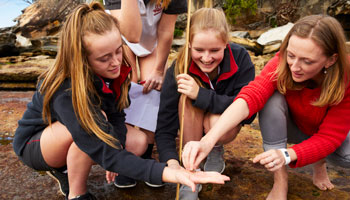
The academic curriculum embodies biologically secondary knowledge.
So what is the significance of the biologically primary and biologically secondary distinction?
Most people recognise intuitively that it has explanatory force. It explains why parents don’t have to teach their children to speak but do have to read to them every night for years before they become fluent readers. It explains why lots of playtime is fantastic for pre-school aged children who are busy acquiring folk knowledge at an extraordinary pace with brains designed specifically for that purpose. It also explains why no ordinary child is going to acquire a solid grasp of trigonometry without extended, focused effort and a skilled guide.
The model also explains why it is not enough simply to surround children with beautiful books and adults who love reading. They need explicit teaching over an extended period and years of practice and correction to acquire this biologically unnatural skill.
Watching small children grow and learn is a daily miracle. It seems so effortless – it is so effortless – that we naturally want to replicate that learning process in school. Why can’t we just let children learn by doing? Wouldn’t that be more fun – and even more effective? Why can’t we just put them in a room full of interesting things, answer the odd question, and watch them emerge as confident mathematicians, historians, artists and writers at the age of 18? Geary and his successors have a somewhat deflating answer: ‘Because the brain doesn’t work that way.’ The knowledge we are describing is biologically secondary, and that means it’s going to take good teaching and hard study.
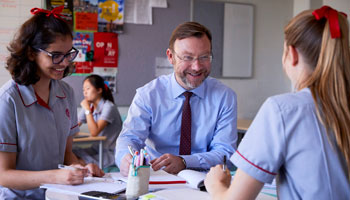
Students need explicit teaching over an extended period and years of practice and correction.
The implications of this distinction are profound. Immersion and play are not effective ways of learning secondary knowledge. This explains, for instance, why ‘digital natives’ (the generations who have grown up immersed in technology) are no better than us oldies in using digital technology for complex tasks. They have the same brains that we do, but less knowledge and experience. Their ape-like ancestors never needed this skill. The model also explains why it is not enough simply to surround children with beautiful books and adults who love reading. They need explicit teaching over an extended period and years of practice and correction to acquire this biologically unnatural skill.
It’s important to note that our biological systems aren’t perfect. We may acquire (biologically primary) social skills instinctively, but we don’t acquire them all at once or at the same pace. Some seem to have lower EQ than others; they take longer to mature into these relationship skills. It’s possible that some explicit pointers can help them get there faster. But we can still see that this is in a different category from, say, the rules of symbolic logic, for which no natural process of maturing will suffice.
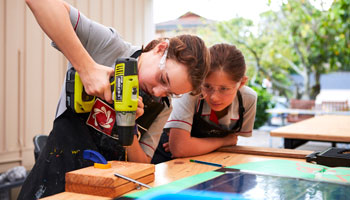
Students learn within a clear structure with skilled teachers carefully guiding them.
The academic curriculum embodies biologically secondary knowledge. It’s hard to learn. That’s why we teach it within a clear structure, with skilled teachers carefully guiding students through a specific sequence of ideas that are explicitly introduced at each step. There are opportunities to play with ideas, and to explore in a much less structured way, but generally, these are effective for advanced students rather than beginners.
The academic curriculum embodies biologically secondary knowledge. It’s hard to learn. That’s why we teach it within a clear structure, with skilled teachers carefully guiding students through a specific sequence of ideas that are explicitly introduced at each step.
We also recognise how important it is for students to learn to navigate relationships, communicate well and collaborate effectively. They will bring a certain level of skill with them, but these skills need to be enhanced and refined as they grow towards adulthood. This is why a rich extra-curricular program, with opportunities to learn how to lead, how to follow, how to communicate and how to listen, has always been seen as equally important to a Queenwood education. When their intellectual development is matched by their capacity for leadership and service, that’s when we have prepared them for life.
This article was first published in The Sydney Morning Herald.
Images supplied by Queenwood School.
New to AISNSW and want to receive AISNSW Education News updates? Click here to register, and select ‘AISNSW Education News’ on the Areas of Interest/Subscriptions page.